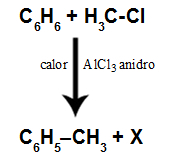Let's start by defining what sodium bicarbonate is: the main component of antacids. Chemically known as NaHCO3, sodium bicarbonate is a white powder that constitutes a water-soluble crystalline mixture. This compound is classified as soluble alkaline and is also called sodium hydrogen carbonate.
Sodium bicarbonate, when diluted, releases carbon dioxide according to the equation:
NaHCO3 + HCl → NaCl + H2O + CO2
As you can see, the products of the reaction are carbon dioxide, sodium chloride and water.
Note that in the presence of water, NaHCO3 reacts with acids releasing CO2 (g), responsible for the effervescence. We can notice the presence of carbon dioxide when ingesting the antacid through the release of gas through the mouth (belching).
Do not stop now... There's more after the advertising ;)
Stomach antacids have the power to neutralize the excess of HCl (hydrochloric acid) in the gastric juice present in our stomach, this acid helps in the digestion of the food we eat. Stomach discomfort can be caused by incorrect nutrition that stimulates the stomach to produce more hydrochloric acid to aid digestion, or by anxiety and nervousness. These two situations cause an imbalance of stomach acidity.
So far we have only shown the benefits of antacids, but as everything in excess is harmful, we have the negative side: if the gastric acid is neutralized daily, there will be an increase in gas in the stomach due to the release of CO2 of effervescents.
By Líria Alves
Graduated in Chemistry
Would you like to reference this text in a school or academic work? Look:
SOUZA, Líria Alves de. "Stomach antacid and its effervescence"; Brazil School. Available in: https://brasilescola.uol.com.br/quimica/antiacido-estomacal-sua-efervescencia.htm. Accessed on June 27, 2021.



